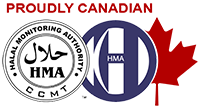Halal monitoring authority SUPPORTS
UNHCR
PROJECTS
Please help refugee families in need
Afghanistan Emergency Situation
-
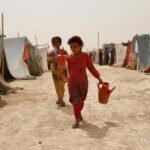
- Children on their way out of the Nawabad Farabi-ha IDP camp as the wind and the dust blows though the camp. ;
-

- Families displaced by the conflict in Afghanistan are forced to live in makeshift tents. Mohammad Faiz sits next to his tent in the Bricade settlement to show the tiny space he shares with his family. U.N. Secretary-General António Guterres warned that “a humanitarian catastrophe looms” in Afghanistan after the Taliban takeover on 15 August. ; Since the start of this year, the Afghan conflict has prompted more than 550,000 people, 80 percent of them women and children, to flee their homes. UNHCR has provided emergency assistance to 230,000 displace people in Afghanistan, including cash assistance, shelter kits, hygiene support and other essential relief items. Protection monitoring and needs assessments are continuing for some half a million displaced Afghans, 80 per cent of whom are women and children.High Commissioner Filippo Grandi said 500,000 Afghans could flee by the end of the year.
-
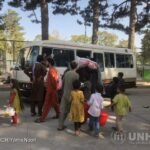
- Relocation of internally displaced Afghans in Shahr-e Naw park in capital Kabul,13 August 2021 ; As the Taliban conquest continued across Afghanistan, more internally displaced persons started fleeing to Kabul, which was considered a strong hold and safe haven. On 11 August, following the fall of Ghazni city/province, now fallen Government sources reported that some 300 families had fled to Kabul; most of them hosted by relatives and some living in the open. More IDPs also fled to capital Kabul from Kunduz and Takhar provinces as Taliban fighters continued their conquest up until 15 August when Taliban took over Kabul. On Friday 13 Aug, (previous) Government and humanitarian agencies, including UNHCR began relocating refugees living in the Shahr-e Naw park in Kabul and other open spaces in PD4 and PD17 (neighbourhoods), to government and public buildings in Dasht-e-Padola (PD7) and Deh-Sabz (Bagrami district). By Sunday 15 August some 500 families (3,500 individuals) had been relocated and the relocation stopped due to the entrance, takeover of Kabul by the Taliban, and ensuing insecurity. As of 19 August, thousands of IDPs are squatting around the Kabul international airport seeking any opportunity to board flights taking off and out of Afghanistan.
-
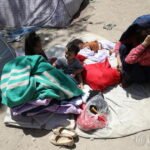
- Internally displaced families from northern provinces, who fled from their homes due the fighting between Taliban and Afghan security forces, take shelter in a public park in Kabul ;
-

- Relocation of internally displaced Afghans in Shahr-e Naw park in capital Kabul,13 August 2021 ; As the Taliban conquest continued across Afghanistan, more internally displaced persons started fleeing to Kabul, which was considered a strong hold and safe haven. On 11 August, following the fall of Ghazni city/province, now fallen Government sources reported that some 300 families had fled to Kabul; most of them hosted by relatives and some living in the open. More IDPs also fled to capital Kabul from Kunduz and Takhar provinces as Taliban fighters continued their conquest up until 15 August when Taliban took over Kabul. On Friday 13 Aug, (previous) Government and humanitarian agencies, including UNHCR began relocating refugees living in the Shahr-e Naw park in Kabul and other open spaces in PD4 and PD17 (neighbourhoods), to government and public buildings in Dasht-e-Padola (PD7) and Deh-Sabz (Bagrami district). By Sunday 15 August some 500 families (3,500 individuals) had been relocated and the relocation stopped due to the entrance, takeover of Kabul by the Taliban, and ensuing insecurity. As of 19 August, thousands of IDPs are squatting around the Kabul international airport seeking any opportunity to board flights taking off and out of Afghanistan.
-
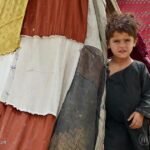
- Zarif, 6 stands peaks from his grandmother, Herati’s makeshift tent. His father was killed during the clashes between the government and the non-government armed forces. ;
-

- An elderly man sits with his grandson in the shade of their UNHCR-donated tent in Omid-Sabz camp near Kabul. U.N. Secretary-General António Guterres warned that “a humanitarian catastrophe looms” in Afghanistan after the Taliban takeover on 15 August. ; Since the start of this year, the Afghan conflict has prompted more than 550,000 people, 80 percent of them women and children, to flee their homes. UNHCR has provided emergency assistance to 230,000 displace people in Afghanistan, including cash assistance, shelter kits, hygiene support and other essential relief items. Protection monitoring and needs assessments are continuing for some half a million displaced Afghans, 80 per cent of whom are women and children.High Commissioner Filippo Grandi said 500,000 Afghans could flee by the end of the year.
-

- 9-year-old, Fatima stands in front of her mud house after bringing water from the nearby well in Omid-Sabz IDP settlement. ;
Highlights
The humanitarian situation in Afghanistan has dramatically worsened due to the recent wave of violence and insecurity, resulting in significant new displacement of civilians within the country. As the evacuation flights from Kabul airport ended on 30 August, the needs in Afghanistan remain enormous with some 50% of the population requiring humanitarian assistance.
There are some 570,000 newly internally displaced persons (IDPs) induced by conflict since January 2021, which increased by almost 20,000 since the last update. The priority needs of IDPs remain shelter, non-food items, livelihoods, and cash assistance to meet their basic needs, according to the most recent inter-agency assessments. UNHCR has access to all provinces in Afghanistan, operating in some two thirds of district. In August, UNHCR has assisted some 20,000 IDPs through its emergency programming, including through the provision of tents, cash, hygiene kits, and other essential items. This brings the number of IDPs that UNHCR has provided emergency assistance to this year to some 240,000 individuals. Humanitarian assistance and other distributions by UNHCR and partners are ongoing in Kabul, Helmand, Zabul, Kunar, Kandahar, Nangarhar, Badghis, and other provinces.
Operational context
3.5 million people are internally displaced (IDPs) inside Afghanistan due to conflict, including 550,000 newly displaced in 2021 alone. The number of people forced to flee may yet still increase.
Families who have recently been displaced within Afghanistan speak of having to flee at a moment’s notice, only with the clothes on their backs. The risk of improvised explosive devices attacks by armed groups along the roads is high. The needs of those who have had to flee suddenly are acute.
With more than 2.6 million registered Afghan refugees worldwide, the Afghans constitute one of the largest protracted refugee situations under UNHCR’s mandate. 90% of all registered Afghan refugees (2.2 million) continue to be hosted by neighboring countries – Iran and Pakistan.
Afghanistan’s children are growing up amid this crisis. Afghanistan today has a population of 40 million people, most of them young, facing insecurity and economic challenges, with over 80% of those displaced in the violence since May being women and children. The current and unfolding situation is especially challenging for women and girls, with concerns for their education and hopes for the future being threatened.
The people of Afghanistan have lived with conflict and instability for more than four decades. Some generations have never known peace. Now, their negative coping mechanisms are being exacerbated and high levels of displacement, further impacted by the COVID-19 pandemic, deepening poverty, and recurrent natural disasters.
With estimates that less than 4 percent of the entire population is fully vaccinated, the spread of COVID-19 in Afghanistan is making the situation far worse. The health system is already overwhelmed, and primary care is disrupted for patients with other conditions – but the country is seeing a dramatic and continuous rise in COVID-19 cases. While some vaccines are beginning to arrive thanks to the COVAX Facility, there are still millions of people vulnerable to coronavirus.
Humanitarian resources are currently falling dramatically short. We call on donors to remain steadfast in their support for humanitarian operations in Afghanistan and are also appealing for more support. UNHCR’s Supplementary Appeal for the Afghanistan Situation highlights US$62.8 million as urgent needs to support the response for internally displaced people in Afghanistan as well as preparedness in Afghanistan and its neighbouring countries. These requirements are part of the US$351 million requirements for the Afghanistan situation, which remains drastically underfunded at 43 per cent.
Featured companies and partners


































